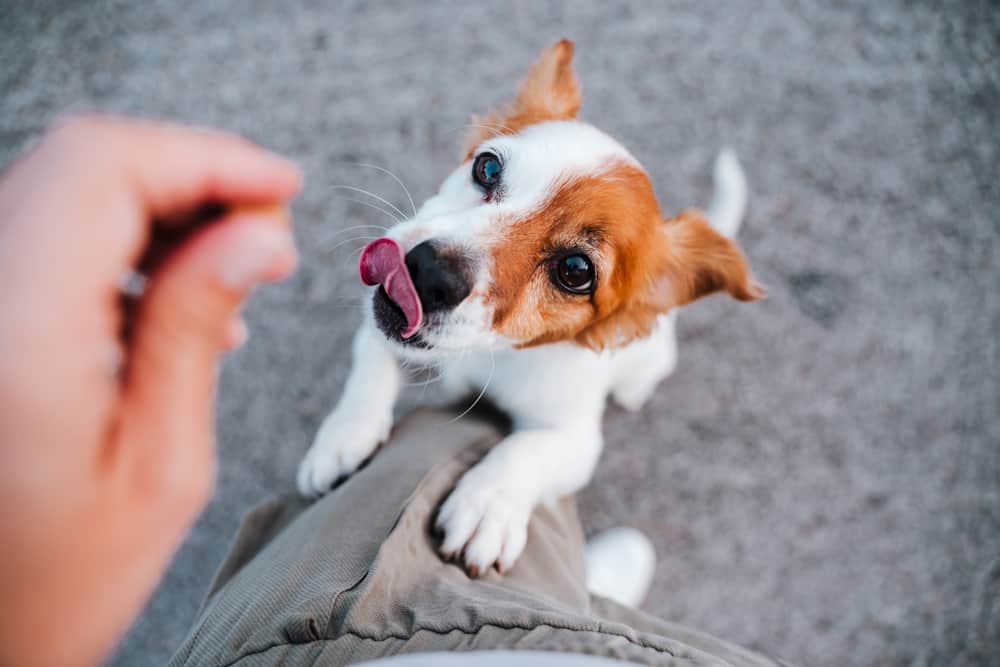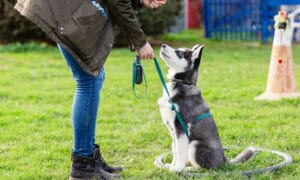“This post contains affiliate links, and I will be compensated if you make a purchase after clicking on my links.”
A lot will change when you bring home a rescue dog, both for you and for your new furry family. These 10 simple mindset shifts will set you both up for success.

By Katya Lidsky
So you’re ready to adopt a dog or maybe you’ve already chosen one and are about to bring him or her home. Congratulations! Buckle up for a transformative journey and a love like you’ve perhaps never felt before.
To ensure that you have the best experience possible adjusting to your new pup, here are some tips that might help you manage expectations and prepare for the ups and downs of dog-loving.
1. Stick to the basics.
When bringing a rescue pet into your family, it’s natural to want to make him feel as happy and comfortable as possible. Yet the problem with doing that with wild abandon is that you could unintentionally reinforce an anxious or fearful state of mind in your dog. When a dog comes into a new home, he will try to figure out his new surroundings, who you are, and who he is now in relation to his new pack. This can be a scary time.
So consider sticking to the basics – take walks, provide healthy meals, and give love when your dog is calm. Skip giving him access to the couch or your bed because privileges are way easier to give later when everyone is used to one another and settled in. It’s much harder and a lot more work to undo a habit that you decide you no longer want. Keep it simple, let things unfold, and get to know your dog with boundaries in place.
2. Routine is king.
Your adopted dog needs care, tenderness, and affection. But in order to transition as smoothly as possible into your lifestyle, your dog also needs a routine. Try to be consistent about when your pup goes on bathroom breaks, when and how you feed her, and where she sleeps. Play a bonding game each day at around the same time, use the crate when you leave the house, and pair it with a fun activity like a stuffed Kong or bully stick to keep her occupied. By staying consistent, your dog will understand the new normal faster and easier, and it will make her feel safe.
3. Give them time – rule of 3.
There is a three-rule in rescue: for the first three days, your new dog will likely feel overwhelmed by all the changes. He might not eat or drink or relieve himself when he goes outside and may be shut down. Give him a few days to adjust and decompress, and know that in three weeks or so, your dog will start to show the colors of his true personality. Often the quirks will surface and sometimes behavioral challenges may pop up too. Don’t fret, your commitment will make the difference as you teach your dog how to live with you.
By playing training games and partaking in bonding activities designed to keep your dog’s mind balanced, your dog will accept his new home, his new identity within it, and build a solid sense of trust. They say it takes about three months for your dog to fully understand his new place in the world. By keeping him mentally stimulated and physically exercised, it’ll go a lot smoother.
4. Slow and gradual wins the race.
Dogs learn best slowly and gradually over time. It can be tedious. It can definitely test your patience. But that’s just the way canines build associations. However, because dogs don’t generalize well, they may learn something in the home that they don’t apply at the park, for example. You will have to teach them again in this new setting, with these new distractions. Gradually, with continued practice your efforts will pay off and you will help them your dog reach their fullest potential.

5. No free food.
When a dog first comes into a new home, use feeding time to practice basic commands like “sit” or “down.” Inserting a moment to work with your dog and connect with her is great for your relationship. Even five minutes a day while you drink your morning cup of coffee to interact and engage matter a lot to your dog. Over time, these practice points create patterns of mutual respect and will develop the feedback loop between the two of you. With every shared moment, you deepen your communication.
6. What is your energy relaying?
Dogs don’t carry around the past or the future the way we do. It’s why we love them, for their keen ability to be ever present in this moment, inviting us to join them. Because dogs don’t rely on words and subtext, a lot of what they pick up on is through our energy. Check your vibe when you’re with your dog. Are you rushing her? Anxious? Annoyed? Is this feeling really about the dog or someone/something else? You can always choose to focus on your pet, touch soft fur, and relax into the present moment along with her.
Keep in mind that especially when you’re walking your dog, the leash is a direct line of energy so any unease or nervousness will be felt by her. The good news is that you can change the nature of her experience and your own by dropping into yourself and building in breaks for your dog to smell so you can both enjoy a stroll through nature.
Another tip: try journaling for five minutes before you take a walk. With those feelings identified and processed, you won’t project them onto the dog.
7. Track to help you see how far you’ve come.
Dust off an old notebook and take notes! Sometimes simply tracking what issues you and your dog had at the beginning and how they’ve been overcome can do wonders for your story and remind you what you have accomplished together, from establishing patterns in the home to addressing undesired behaviors, from the small wins to the big ways you’ve grown close. From time to time, it’s nice to see in black and white how hard you’ve worked and all you’ve achieved, side by side, hand in paw.
8. Expect dips.
Dogs have personalities. They are individuals with needs, wants, and opinions. Sometimes they will express them and you won’t like it. Sometimes they won’t be clear about what’s bothering them and you’ll be frustrated by guessing. Expect dips from time to time, whether it is having accidents in the house or your dog not liking every person or animal they come in contact with. Commit to setting them up for success. Find the help of a certified, positive-based dog trainer and don’t give up.
When you work through the hard stuff, that’s precisely when the love grows. The effort you put in is equal to the love you’ll feel, and just like with other humans, no relationship is perfect. The work is required. The work makes it worth it.
9. Whatever you focus on grows.
Pay attention to every time you touch your dog, talk to your dog, or even look at your dog. Whenever you interact with your pet, you are saying, more of that please! So be mindful about your dog’s behavior and state of mind when you reinforce them with touch, words, eye contact, even proximity. Sometimes we think we’re clearly saying no; for example when our dog is jumping up on us as soon as we walk through the door. But in truth, if you are touching your dog, looking at him or talking to him, even if you’re saying, “Stop jumping on me!” you are actually reinforcing the behavior.
Instead, try turning your back and simply removing all reinforcers when your dog offers anything you don’t particularly like. However – and here is the teachable moment – the second your dog chills out or offers the behavior you DO want, that is exactly when you turn around again to smile, give scratches, and praise calmly. Offer him all the love paired with what you like as a way to relay what you want your dog to do more of. Easy to say, harder to do. Simply put pay attention to what you want and ignore what you don’t.

10. Watch what comes up in you.
Dogs can trigger us. They provide love and companionship, sure, but sometimes they drive us crazy. Sometimes it will be a training issue, you’ll have to implement behavioral training protocols. Other times, though, it’s not about the dog. Sometimes we’re stressed, not getting our needs met or the support we crave. When this happens, having to take our dog on a walk on top of that might seem like an irritating chore. But here is where a paradigm shift can help you. Because these cases are less about your rescue pup and more about the dynamics of your life. Acknowledge and be honest with yourself. You deserve to ask for what you need. And your dog deserves to be a dog.
As you and your dog grow together, you will offer each other a special relationship unlike any other. Remember to have fun along the way as you become an imperfect, messy, glorious family. Good luck! We are always here to support you when you need us.
Katya Lidsky is a writer, host of The Animal That Changed You podcast, and an all around dog obsessed individual. She lives in Austin with her family and an endlessly rotating cast of foster pets (much to her husband’s chagrin.) She hopes to meet you someday either at the animal shelter or by the dessert table. She’ll be at one or the other. Follow her at @KatyaLidsky.
Found this article helpful? Pin it!
























